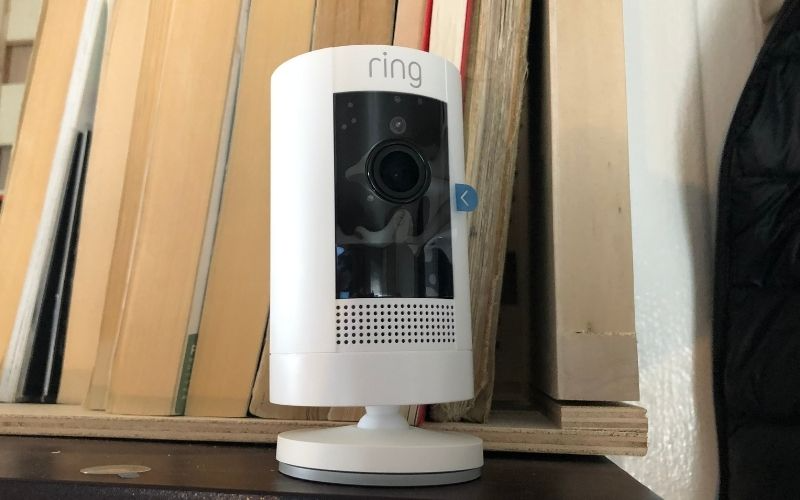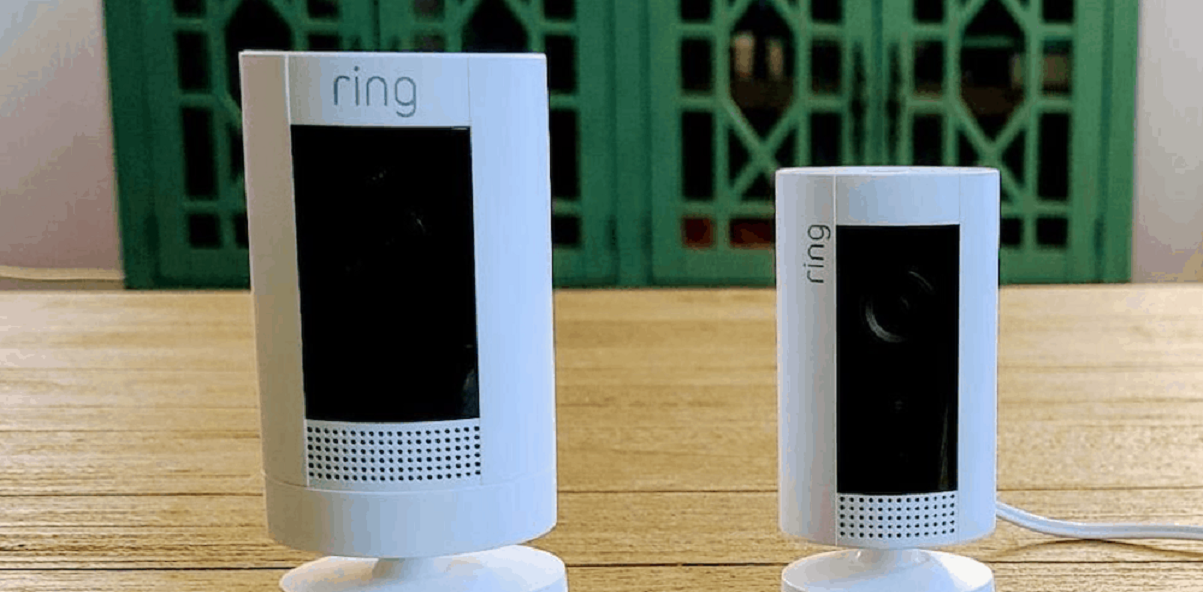Understanding Continuous Recording Modes
Ring cameras, a popular choice for home security systems, offer advanced features designed to keep your property and loved ones safe. One question that frequently arises among potential users is whether these devices record continuously, capturing every moment throughout the day and night. To provide a comprehensive answer, we must delve into the various recording modes available on Ring cameras and examine how they cater to different surveillance needs.
Continuous Video Recording (CVR) Feature
Continuous Video Recording (CVR) is a premium feature offered by Ring for certain camera models, enabling round-the-clock footage capture. When enabled, CVR allows your Ring camera to record non-stop, storing the footage in the cloud for later review. This mode ensures that you have a complete visual record of events unfolding in the monitored area, providing an unparalleled level of detail and peace of mind.
Benefits of CVR
- Uninterrupted Coverage: CVR ensures that no event, no matter how fleeting, goes unnoticed. From subtle changes in the environment to unexpected movements, continuous recording guarantees that every moment is captured and stored for future analysis.
- Time-Stamped Footage: With CVR, each video clip is time-stamped, allowing you to easily locate specific moments or track patterns over time. This can be invaluable when investigating incidents, identifying recurring issues, or simply reviewing daily activities.
- Enhanced Incident Resolution: In case of an incident, having continuous footage greatly aids in understanding the full context and sequence of events. It can provide crucial evidence for law enforcement, insurance claims, or resolving disputes with neighbors or service providers.
Event-Based Recording: Standard Mode and Motion Detection
While CVR provides continuous footage, many Ring users opt for the standard event-based recording mode, which relies on motion detection and other triggers to initiate recordings. This approach conserves storage space and reduces subscription costs while still capturing essential activity around your home.
Motion Detection
Ring cameras are equipped with advanced motion sensors that detect changes in the field of view. When motion is detected, the camera automatically begins recording, usually capturing a pre-event buffer (a few seconds before the trigger) and a post-event buffer (several seconds after). This ensures that crucial moments leading up to and following the motion are included in the recorded clip.
Other Triggers
In addition to motion detection, some Ring cameras support other event triggers, such as:
- Person Detection: Advanced models can distinguish between human and non-human movement, reducing false alerts and focusing on the most relevant events.
- Customizable Motion Zones: Users can define specific areas within the camera’s field of view where motion should trigger recordings, tailoring surveillance to high-risk or frequently trafficked zones.
- Smart Alerts: Some cameras integrate with smart home devices or third-party services, allowing recordings to be triggered by events like doorbell rings, package deliveries, or even environmental factors like temperature changes.
Storage Considerations and Subscription Plans
The decision to use continuous or event-based recording is closely tied to storage requirements and associated costs. Ring offers several subscription plans to accommodate different user preferences and budgets.
Cloud Storage
Ring’s cloud storage options are essential for accessing and managing recorded footage. The Basic Plan typically includes a limited amount of free storage for event-based recordings, while the Ring Protect Plus or Pro plans provide expanded storage and additional features, such as:
- Extended Event History: Store and review footage from multiple cameras for a longer period (e.g., 60 or 180 days).
- Video Preview Images: View thumbnail images of recorded events, making it easier to navigate and find specific clips.
- CVR Compatibility: Enable Continuous Video Recording for eligible cameras, subject to additional fees based on the camera count and desired retention period.
Local Storage Alternatives
For users who prefer not to rely solely on cloud storage, Ring cameras may support local storage options:
- MicroSD Card: Some models allow you to insert a microSD card for onboard storage of event-based recordings. While this provides a cost-effective alternative, it does not support continuous recording and may have capacity limitations.
- Ring Edge: An upcoming feature, Ring Edge enables users to store and process footage locally using a supported Ring device (like the Ring Alarm Pro) and compatible hard drive. This option may offer more control over data privacy and potentially reduce subscription costs, though details on CVR support and pricing are yet to be going to announce.
Balancing Surveillance Needs and Privacy Concerns
Balancing surveillance needs and privacy concerns is a complex and delicate task that requires careful consideration of societal interests, individual rights, and technological advancements. In an era where both security threats and data-driven technologies are rapidly evolving, finding the right equilibrium between these two often competing factors is crucial. This can be going to achieve by adhering to the following principles and strategies:
Legal framework and oversight
Establish a robust legal framework that clearly defines the scope, limits, and conditions under which surveillance can be going to conduct. This should include provisions for obtaining warrants or judicial authorization based on probable cause, regular review by independent oversight bodies, and strict penalties for abuses. Laws should be periodically going to review and updated to keep pace with technological developments.
Targeted and proportionate surveillance
Surveillance measures should be going to tailor to specific, legitimate objectives (such as preventing terrorism, fighting organized crime, or protecting public health) and be proportionate to the perceived threat. Mass surveillance or indiscriminate data collection should be going to avoid unless there is compelling evidence that it is the only effective means to achieve a vital societal interest and that the benefits outweigh the potential harm to privacy.
Data minimization and retention
Collect only the minimum amount of personal data necessary for the stated purpose and retain it for the shortest possible time. Implement strict data handling policies to ensure that collected information is going to use solely for its intended purpose and is securely going to store, processed, and eventually destroyed when no longer needed.
Transparency and accountability
Publicly disclose the nature, extent, and rationale behind surveillance programs, while respecting the need for operational secrecy in certain cases. Regularly report on the effectiveness and impact of these programs, including any incidents of abuse or non-compliance. Provide individuals with accessible channels to access, correct, or challenge the use of their personal data in surveillance contexts.
Anonymization and pseudonymization
Whenever feasible, process data in anonymized or pseudonymized form to minimize the risk of re-identification and protect individuals’ privacy. Develop and employ advanced techniques for de-identification and aggregation to extract insights from large datasets without compromising individual privacy.
Technical safeguards and encryption
Utilize strong encryption and other technical measures to protect data in transit and at rest. Ensure that surveillance systems are going to design with robust security features to prevent unauthorized access, tampering, or data breaches. Promote the use of end-to-end encryption in communication platforms to protect users’ privacy.
Privacy-enhancing technologies (PETs)
Encourage the development and adoption of PETs, such as differential privacy, homomorphic encryption, and secure multi-party computation, which enable data analysis and sharing while preserving privacy. These technologies can help strike a balance between surveillance needs and privacy concerns by allowing useful insights to be going to extract from data without revealing sensitive personal information.
Public consultation and stakeholder engagement
Involve citizens, civil society organizations, industry representatives, and experts in the debate and decision-making processes surrounding surveillance policies. Conduct regular consultations, public hearings, and impact assessments to ensure that diverse perspectives are going to consider and that potential privacy risks are adequately going to address.
International cooperation and harmonization
Collaborate with other countries and international organizations to develop common standards, best practices, and legal frameworks for cross-border surveillance activities. Harmonizing regulations can reduce the risk of jurisdictional arbitrage and ensure a more consistent level of protection for individuals’ privacy worldwide.
By implementing these principles and strategies, societies can strive to achieve a balanced approach to surveillance that effectively addresses legitimate security concerns while respecting and protecting individuals’ fundamental right to privacy. Continuous dialogue, innovation, and adaptation will be essential to maintain this balance in the face of ever-evolving challenges and technological advancements.
Conclusion
Ring cameras do offer continuous recording capabilities through the Continuous Video Recording (CVR) feature, providing uninterrupted footage for enhanced security and peace of mind. However, this mode is optional, and many users opt for the standard event-based recording relying on motion detection and other triggers, which balances surveillance needs with storage efficiency and cost considerations. When choosing a recording mode, weigh the benefits of continuous coverage against privacy concerns, local regulations, and personal preferences, ensuring your Ring camera setup aligns with your unique security and surveillance goals.







